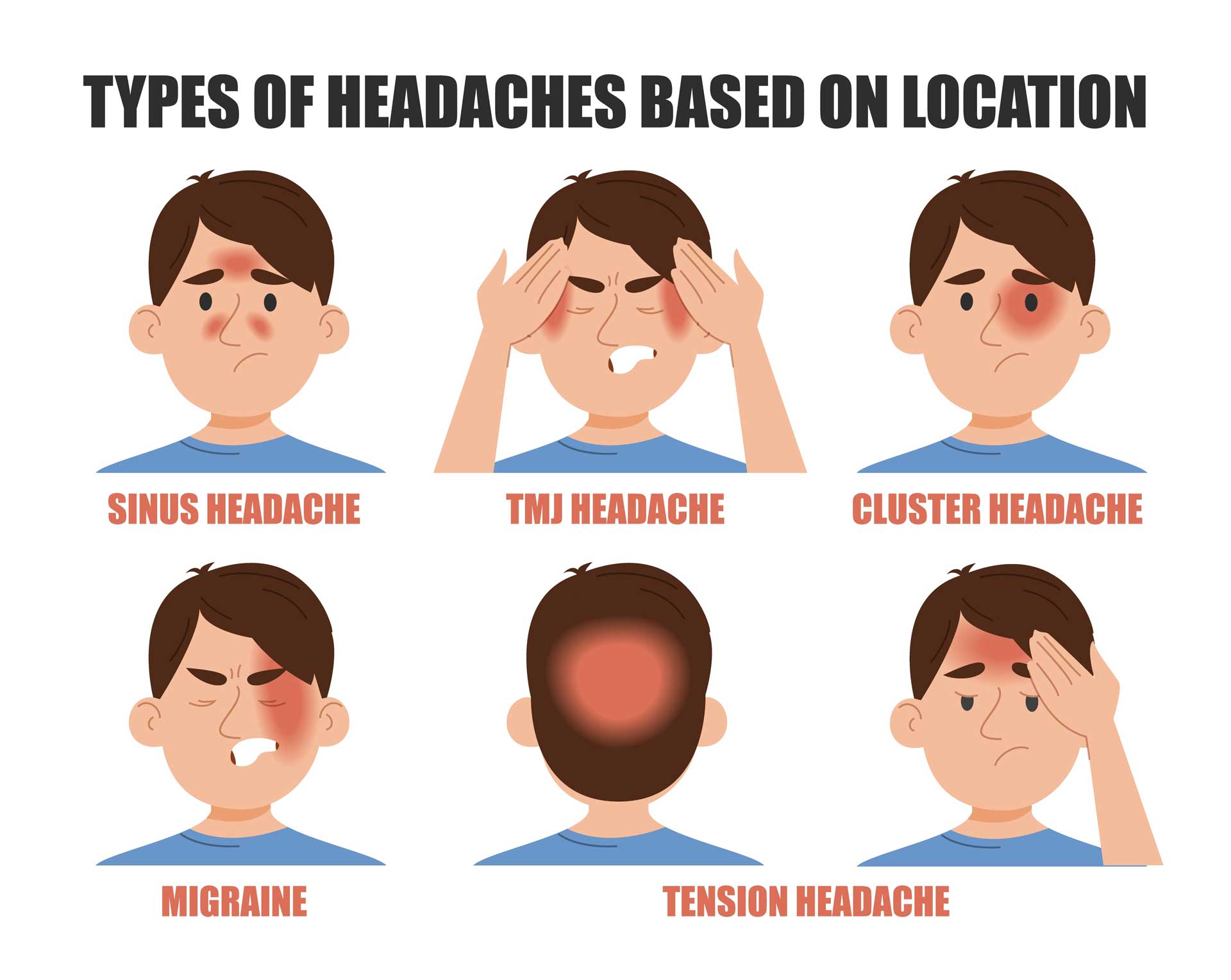What are the symptoms of sinus headaches?
Sinus headaches are typically characterized by a set of symptoms related to sinus congestion and inflammation. These symptoms can include:
- Pain and Pressure: A sinus headache usually causes a deep, constant pain and pressure in the forehead, cheekbones, bridge of the nose, and around the eyes. The pain often intensifies with sudden head movements or straining.
- Nasal Congestion: Sinus headaches are often accompanied by a feeling of stuffiness in the nose. There may also be nasal discharge that is thick and yellow or green.
- Facial Tenderness: The areas around the sinuses (forehead, cheeks, and eyes) may feel tender to the touch.
- Worsening Pain with Movement: Bending forward or lying down can make the pain worse because of increased pressure in the sinuses.
- Other Sinus Symptoms: There may be other symptoms related to sinus issues, such as a reduced sense of smell, a feeling of fullness in the ears, and a sore throat.
- Fatigue: Sinus headaches can also lead to feelings of tiredness or fatigue.
- Fever: In some cases, especially if the sinus headache is due to a sinus infection, there may be a low-grade fever.
These symptoms can sometimes be confused with those of other types of headaches, such as migraines, which can also cause pain in similar areas.
What are the causes of sinus headaches?
Sinus headaches are typically caused by issues related to the sinuses, which are air-filled cavities in the skull around the nose, forehead, and eyes. The primary causes include:
- Sinusitis: The most common cause of sinus headaches is sinusitis, which is an inflammation or infection of the sinuses. Sinusitis can be acute (short-term) or chronic (long-term). It occurs when the sinuses become blocked and filled with fluid, leading to infection and inflammation.
- Allergies: Allergic reactions, such as hay fever or allergic rhinitis, can cause inflammation and swelling of the sinuses, leading to sinus headaches. Allergens like pollen, dust, mold, and pet dander can trigger these reactions.
- Nasal Polyps: These are noncancerous growths in the lining of the nasal passage or sinuses that can block normal sinus drainage and lead to headaches.
- Deviated Septum: A deviated septum, which is a displacement of the wall between the nostrils, can cause one side of the nasal passage to be smaller. This can lead to sinus blockages and contribute to sinus headaches.
- Respiratory Infections: Common colds and other respiratory infections can cause sinus inflammation, leading to sinus headaches.
- Environmental Factors: Exposure to certain environmental factors, such as cold, dry air, or sudden changes in temperature, can lead to sinus congestion and headaches.
- Air Pressure Changes: Changes in air pressure, such as during air travel or at high altitudes, can affect the sinuses and cause headaches.
- Irritants: Exposure to smoke, strong odors, or pollutants can irritate the nasal passages and sinuses, leading to inflammation and headaches.
- Structural Abnormalities: Abnormalities in the nasal or sinus structure, such as a narrow sinus opening, can predispose someone to sinus headaches.
These causes often lead to blockages in the sinus cavities, trapping mucus and air, which creates pressure and results in the pain associated with sinus headaches.
What is the treatment for sinus headaches?
Treatment for sinus headaches focuses on relieving the underlying cause, typically sinusitis or sinus congestion. Approaches can include:
- Medications: Over-the-counter pain relievers like ibuprofen or acetaminophen can help alleviate headache pain. Decongestants, either oral or nasal, can reduce sinus congestion, making it easier for the sinuses to drain. Antihistamines may be useful if the headache is related to allergies. If a bacterial infection is causing sinusitis, antibiotics may be prescribed.
- Nasal Irrigation: Using a saline nasal spray or performing a nasal irrigation with a neti pot can help clear out mucus from the sinuses, reducing pressure and relieving headache symptoms.
- Steam Inhalation: Inhaling steam from a bowl of hot water or taking a hot shower can help moisten the sinus passages, reducing congestion and relieving pain.
- Hydration: Drinking plenty of fluids, especially water, helps thin the mucus, making it easier for the sinuses to drain.
- Warm Compress: Applying a warm compress to the face can help ease sinus pressure and pain by promoting drainage.
- Allergy Management: If allergies are contributing to sinus headaches, managing the allergies through avoidance of triggers, taking antihistamines, or receiving allergy shots (immunotherapy) can help prevent sinus headaches.
- Surgery: In chronic cases, where structural issues such as a deviated septum or nasal polyps are causing frequent sinus headaches, surgery may be considered to correct the issue and improve sinus drainage.
- Humidifier Use: Running a humidifier in your home, especially during dry seasons, can help keep the air moist, reducing sinus congestion and discomfort.
Treatment is often a combination of these methods depending on the severity and underlying cause of the sinus headache. If sinus headaches are frequent or persistent, it’s essential to consult a healthcare provider for a more tailored approach.

Leave a Reply
You must be logged in to post a comment.